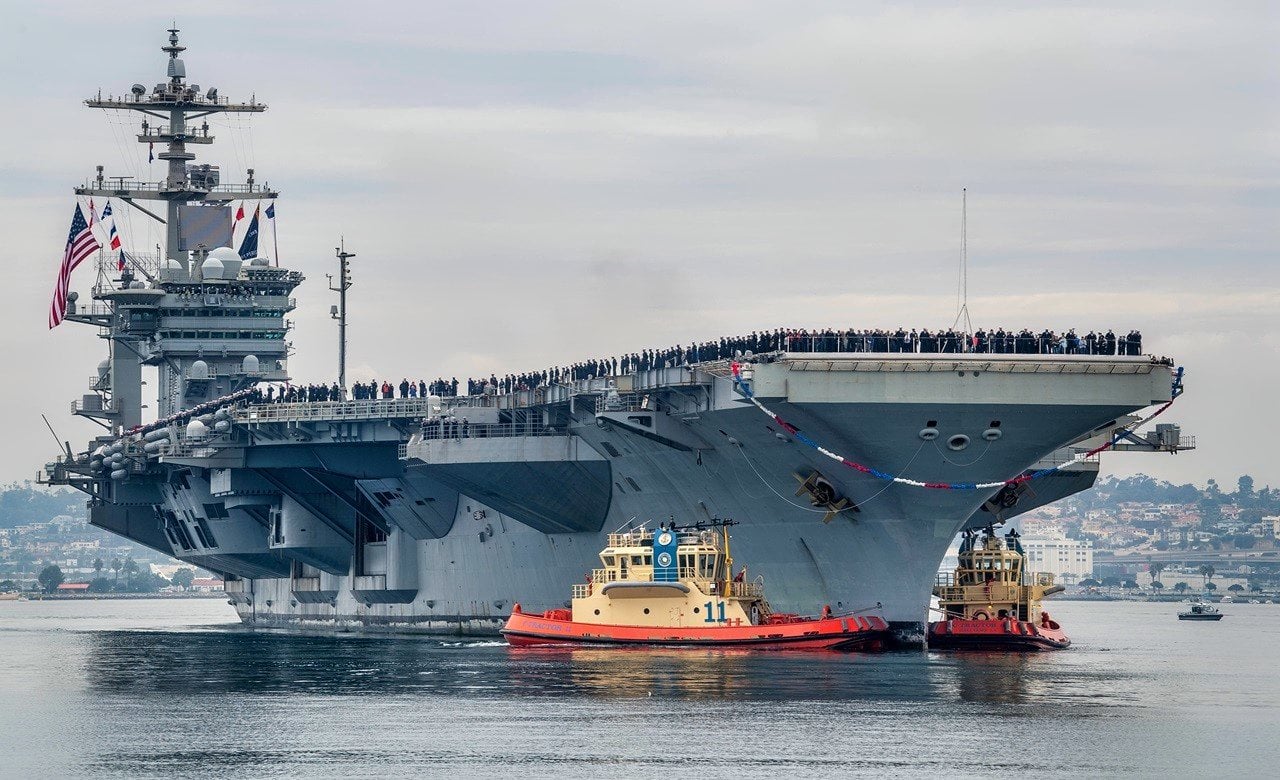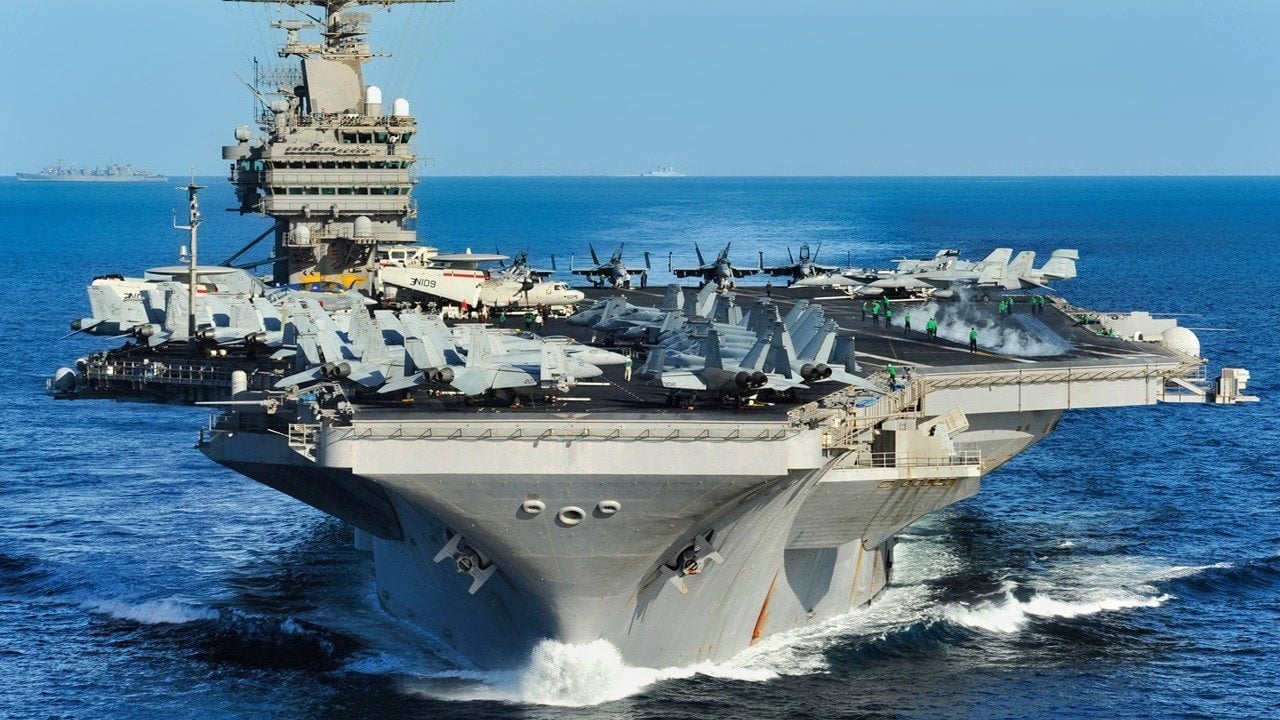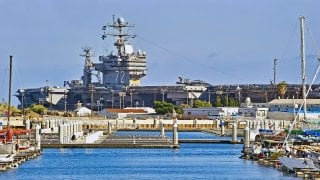USS Abraham Lincoln: This U.S. Navy Aircraft Carrier Is Close to Unstoppable
Measuring around 1,000 feet in length with a beam of about 250 feet, the USS Abraham Lincoln aircraft carrier displaced 97,000 tons. Her angled flight deck and CATOBAR arrangement enable aircraft to operate off the deck.
USS Abraham Lincoln Aircraft Carrier - A Complete History of This Nimitz-Class Warship - Last month, the U.S. Navy’s aircraft carrier USS Abraham Lincoln arrived in Pearl Harbor-Hickam for its around-the-world deployment.
Named to honor the nation’s 16th president, CVN-72 is the second ship in the U.S. Navy to bear his name. The keep of the massive carrier was laid on November 3, 1984, at Newport News, Virginia and the nuclear-powered ship was launched in 1988.
The Abraham Lincoln was the fifth Nimitz-class carrier to be constructed and shares many similarities to her sister ships.
What makes this aircraft carrier among the best in the world?
An overview of the Nimitz-class:
For more than four decades, the Nimitz-class carriers have remained a critical component of the Navy’s seapower.
Back in the 1970’s, the Nimitz ships were designed to supplement the preceding Kitty Hawk and Enterprise-class once they were decommissioned from service.
The Navy recognized the need for modernized carriers with increased capabilities following the Vietnam War.
For this reason, the ships in this class were built with larger magazines and greater stores of aviation fuel than earlier carriers.
Unlike the gas turbines or diesel-electric systems incorporated for propulsion on other modern warships, the Nimitz ships were designed with two A4W pressurized water reactors, which enable the carriers to travel at speeds of over 30 knots.
This nuclear power energy source is an incredible feature, since the carriers are capable of operating for more than two decades without needing to refuel it.
Introducing the USS Abraham Lincoln:
Measuring around 1,000 feet in length with a beam of around 250 feet, the USS Abraham Lincoln aircraft carrier displaced 97,000 tons. Her angled flight deck and CATOBAR arrangement enables aircraft from operating off the deck.
The air wings’ strike fighters are primarily F/A-18E and F/A-18F Super Hornets. Up to 82 aircraft make up the carrier’s air wing. In terms of onboard radars, the Abraham Lincoln is fitted with acquisition radar, air search radar, landing air radar, air traffic control radar, in addition to other guidance systems.

Weapons-wise, the Nimitz-class carrier is heavily armed. Weapons on board the carrier include two Mk 57 Mod3 Sea Sparrow surface-to-air missile launchers, three Phalanx Close-In Weapon Systems (CIWS) and two RIM-116 Rolling Airframe Missile short-range surface-to-air missile launchers.

USS Abraham Lincoln’s operational history:
Following her commissioning, USS Abraham Lincoln commenced her first Western Pacific deployment in 1991 in response to Operation Desert Shield/Desert Storm. However, once the carrier set sail, she was rerouted to aid evacuation efforts following the eruption of Mount Pinatubo in the Philippines where she led a 23-ship flotilla that successfully sea-lifted 20,000 evacuees to safety.
During the 1990’s, CVN-72 would participate in Operations Vigilant Sentinel and Southern Watch. In the early 2000’s, she was ordered back to the Persian Gulf as part of the War on Terror. Following a lengthy rehaul beginning in 2013, the Lincoln would become the first carrier in the U.S. Navy to be capable of operating Lockheed Martin’s fifth-generation F-35C Joint Strike Fighters from its decks.

While the Nimitz ships have proven to represent the largest and most capable warships across the globe for many years, the Navy is looking towards newer and more modern vessels like the USS Gerald R. Ford to lead the service in the future.
About the Author: Maya Carlin
Maya Carlin, National Security Writer with The National Interest, is an analyst with the Center for Security Policy and a former Anna Sobol Levy Fellow at IDC Herzliya in Israel. She has by-lines in many publications, including The National Interest, Jerusalem Post, and Times of Israel. You can follow her on Twitter: @MayaCarlin.
Image Credit: Shutterstock images.


